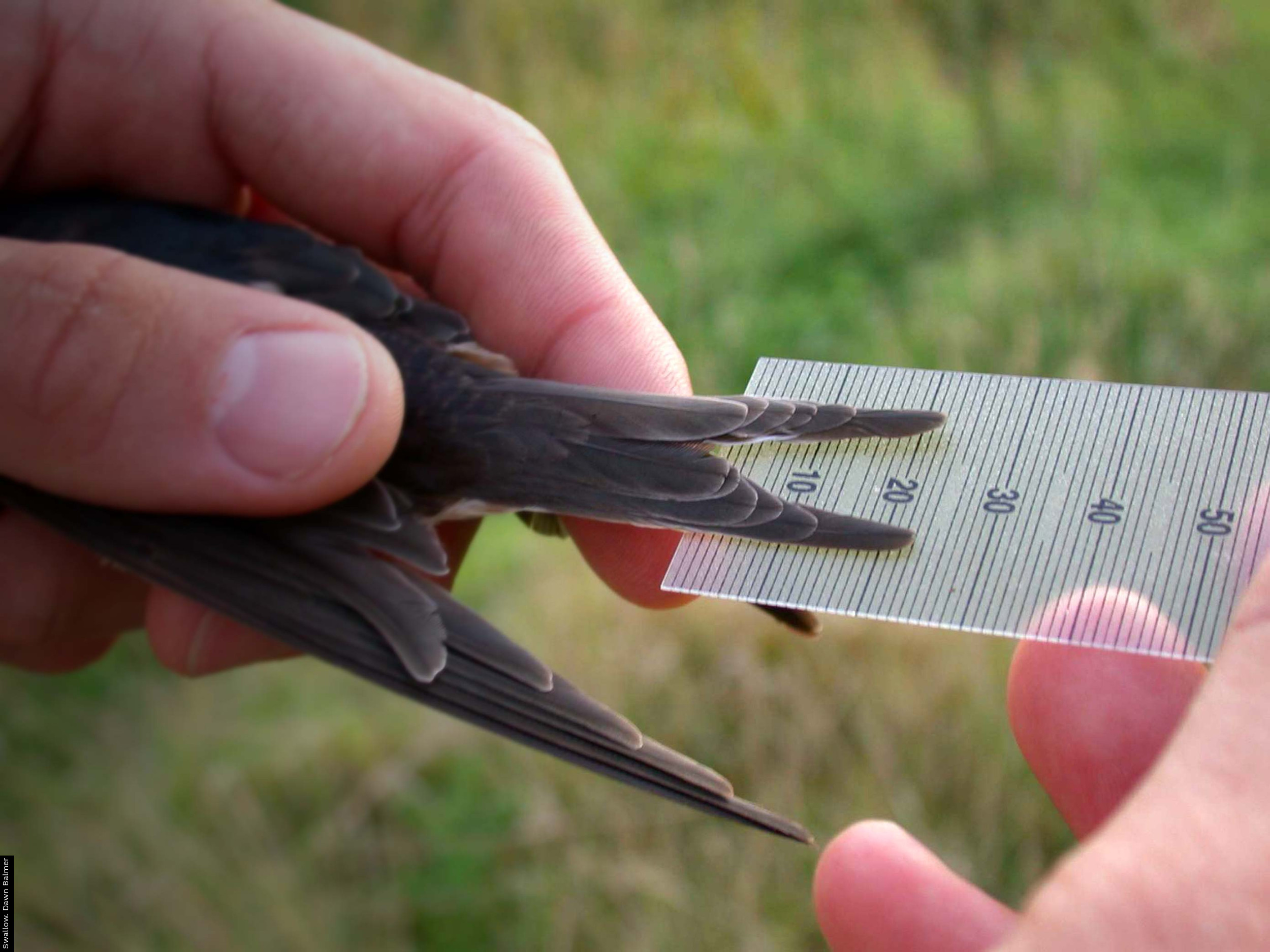Preliminary CES Results 2011
The CES Scheme uses standardised bird ringing to monitor key aspects of the demography of 25 common breeding songbirds. Over 120 sites are monitored by qualified bird ringers through the breeding season, with twelve standard visits between May and August. Changes in the total number of adults caught provides a measure of changing population size, whilst the proportion of young birds caught forms an index of breeding success. Recaptures of adult birds ringed in previous years are also used to estimate annual survival rates.
CES results reveal some extreme highs and lows for 2011
We would like to thank everyone who took part in the CES scheme this summer. It is anticipated that around 130 sites were covered, which is a welcome increase on last year and the highest total since 2000. The early submission of data from a record 98 sites has allowed us to produce one of the most comprehensive sets of preliminary results in the history of the scheme (see Table 1).
| Species | Adult abundance % change 2011 vs 5 year average |
Productivity % change 2011 vs 5 year average |
||
|---|---|---|---|---|
| Wren | -31 | (-38, -22) | +42 | (+23, +63) |
| Dunnock | -21 | (-29, -13) | +52 | (+33, +73) |
| Robin | -30 | (-28, -20) | +60 | (+38, +84) |
| Blackbird | -7 | (-15, +1) | +15 | (+1, +32) |
| Song Thrush | -28 | (-38, -16) | +45 | (+13, +86) |
| Cetti's Warbler | -32 | (-52, -2) | -9 | (-46, +54) |
| Sedge Warbler | +4 | (-4, +12) | +2 | (-9, +13) |
| Reed Warbler | +21 | (+15, +28) | -1 | (-8, +7) |
| Blackcap | +44 | (+35, +54) | +22 | (+12, +32) |
| Garden Warbler | +16 | (+3, +31) | -29 | (-42, -13) |
| Lesser Whitethroat | +12 | (-11, +40) | -36 | (-54, -10) |
| Whitethroat | +59 | (+45, +74) | -10 | (-20, +2) |
| Chiffchaff | +47 | (+34, +61) | -4 | (-14, +6) |
| Willow Warbler | +23 | (+15, +32) | -22 | (-29, -15) |
| Long-tailed Tit | -13 | (-22, -2) | +8 | (-8, +26) |
| Blue tit | +50 | (+39, +63) | -31 | (-37, -24) |
| Great Tit | +7 | (-3, +18) | +18 | (+5, +33) |
| Willow Tit * | +57 | (-11, +179) | -33 | (-66, +33) |
| Treecreeper | +16 | (-13, +55) | +27 | (-12, +83) |
| Chaffinch | -15 | (-24, -5) | +56 | (+33, +83) |
| Greenfinch | -24 | (-36, -11) | +85 | (+47, +133) |
| Goldfinch | +22 | (+2, +45) | -9 | (-34, +25) |
| Linnet | +49 | (+9, +105) | -31 | (-61, +23) |
| Bullfinch | +30 | (+18, +44) | +28 | (+10, +49) |
| Reed Bunting | -23 | (-32, -12) | +7 | (-14, +31) |
Table 1. Changes in captures on Constant Effort Sites in 2011 (based on 98 sites). Significant
increases are in green and significant decreases are in red. Lower and upper confidence
intervals are given in brackets. '*' denotes a small sample size.
Resident species such as Robin (top) were relatively low in abundance in 2011 but had good breeding seasons. However, CES adult abundance figures for migrant species such as Whitethroat (bottom) were above average.
Following yet another very harsh winter, it is not surprising that the abundance of nine resident species was significantly lower than the average over the previous five years (Table 1), with adult numbers for Dunnock, Song Thrush and Reed Bunting falling to their lowest levels since the CES scheme started in 1983 (Table 2). However, a total of 10 species did exhibit significant increases (Table 1), including four residents (predominantly seed-eaters) and six migrants (all warblers). The abundance of Blackcap, Chiffchaff and Blue Tit was the highest recorded since the beginning of the scheme (Table 2).
Ten species, nine residents and one migrant (Blackcap), had a particularly productive breeding season, displaying significantly higher juvenile:adult ratios than the average reported over the previous five years (Table 1). This increase in breeidng success may help to redress the reduction in numbers experienced by many resident species over the last two winters. The productivity of Dunnock, Chaffinch and Bullfinch was the highest recorded since 1983 (Table 2). Breeding success was significantly lower than the five year average for a further four species (Table 1).
| Lowest abundance | Highest abundance | Lowest Productivity | Highest productivity |
|---|---|---|---|
| Wren (1991) | Reed Warbler (2004) | Garden Warbler (2008) | Wren (1987) |
| Dunnock (ever) | Blackcap (ever) | Lesser Whitethroat (ever) | Dunnock (ever) |
| Robin (1991) | Garden Warbler (1998) | Willow Warbler (2001) | Robin (1987) |
| Song Thrush (ever) | Whitethroat (1996) | Blue Tit (2008) | Blackbird (2007) |
| Cetti's Warbler (2001) | Chiffchaff (ever) | Song Thrush (1985) | |
| Long-tailed Tit (2009) | Willow Warbler (2004) | Blackcap (2009) | |
| Chaffinch (1987) | Blue Tit (ever) | Great Tit (2010) | |
| Greenfinch (2010) | Goldfinch (1989) | Chaffinch (ever) | |
| Reed Bunting (ever) | Linnet (2005) | Greenfinch (1990) | |
| Bullfinch (1990) | Bullfinch (ever) |
Table 2. Notable results (compared to previous highest/lowest year since 1983)
Previous years' results
Preliminary results for the breeding season are published online each autumn and are followed by a full report in the annual CES News once all data have been received. Results are also published in the BirdTrends report. For the 2010 results and all previous years, please download copies here.












Share this page